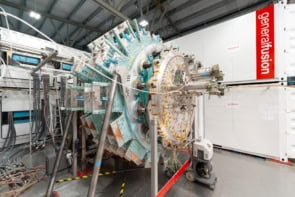Food poisoning from E. coli could soon be a thing of the past if a new physics-based pasteurisation proves successful. A team of researchers from the University of Missouri-Columbia, Iowa State University and the Natick Army Laboratory in the US has developed a 'cold pasteurisation' technique that uses a particle accelerator to kill the bacteria in minced beef. The number of reported E. coli cases has been increasing in recent years, and the bacteria has also resulted in a number of deaths.
For over a century milk has been pasteurised by heating it to 65 degrees Celsius for 30 minutes and then rapidly cooling it to below 10 degrees Celsius for storage. The new technique relies on energetic electrons from a linear accelerator. When the electron beam hits the E. coli, it deactivates the microbe’s DNA. “The whole process takes only a few seconds,” said Nan Unklesbay from the University of Missouri. “E. coli is one of the nastiest bacteria we know about and it can survive temperatures and acidic conditions that others cannot. We know that if we can kill E. coli, we can kill everything else too.”
The pasteurisation process also retains the colour, texture and flavour of the meat, unlike other preservative measures. So far the need to ensure an even distribution of the electrons means that the process is limited to liquids and products of a uniform consistency and shape.



